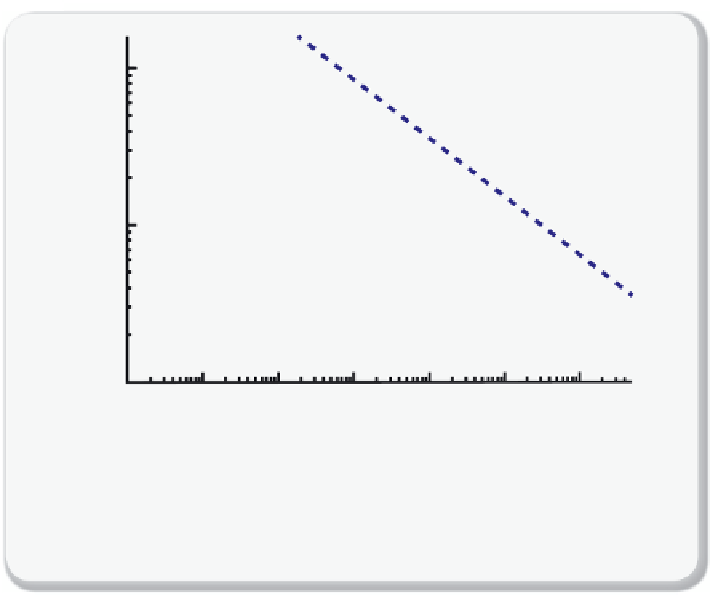Environmental Engineering Reference
In-Depth Information
Upper
bound
100
Glassy
Rubbery
10
1
0.01 0.1 1.0 10 100 1,000 10,000
CO
2
permeability (Barrer)
Figure 7.5.3
Robeson plot: the CO
2
/CH
4
selectivity
Robeson plot: the CO
2
/CH
4
selectivity of a membrane versus CO
2
permeation for glassy
polymers (closed symbol) and rubbery polymers (open symbol).
Figure adapted from
[7.10].
the polymer, the more its atoms rattle around their equilibrium position in
space). Because of the space between polymer chains, there is an addi-
tional “free volume” available as cavities for adsorbates. The nature of
adsorbate interactions with this free volume depends on whether or not
the polymer is “rubbery” or “brittle.” These differences in a polymer's
mechanical character are characterized by a “glass transition tempera-
ture.” Below this temperature polymers are glass-like, which means that
they are brittle and break. Above that temperature, the polymers are rub-
bery. (Imagine a bowl of cooked spaghetti, and the noodles are very
wobbly and active; each individual noodle can mark out a space much
larger than the noodle itself because of its motion.) In this case, the
chains of the rubbery polymer are rearranging on a short time scale,
compared to adsorption and diffusion. As a consequence, as CO
2
goes
into the material it looks as if it is adsorbing into a material that can, like
a liquid, equilibrate. This means it appears to obey Henry's law in that the
concentration of adsorbed CO
2
is a linear function of partial pressure. If



























































Search WWH ::

Custom Search